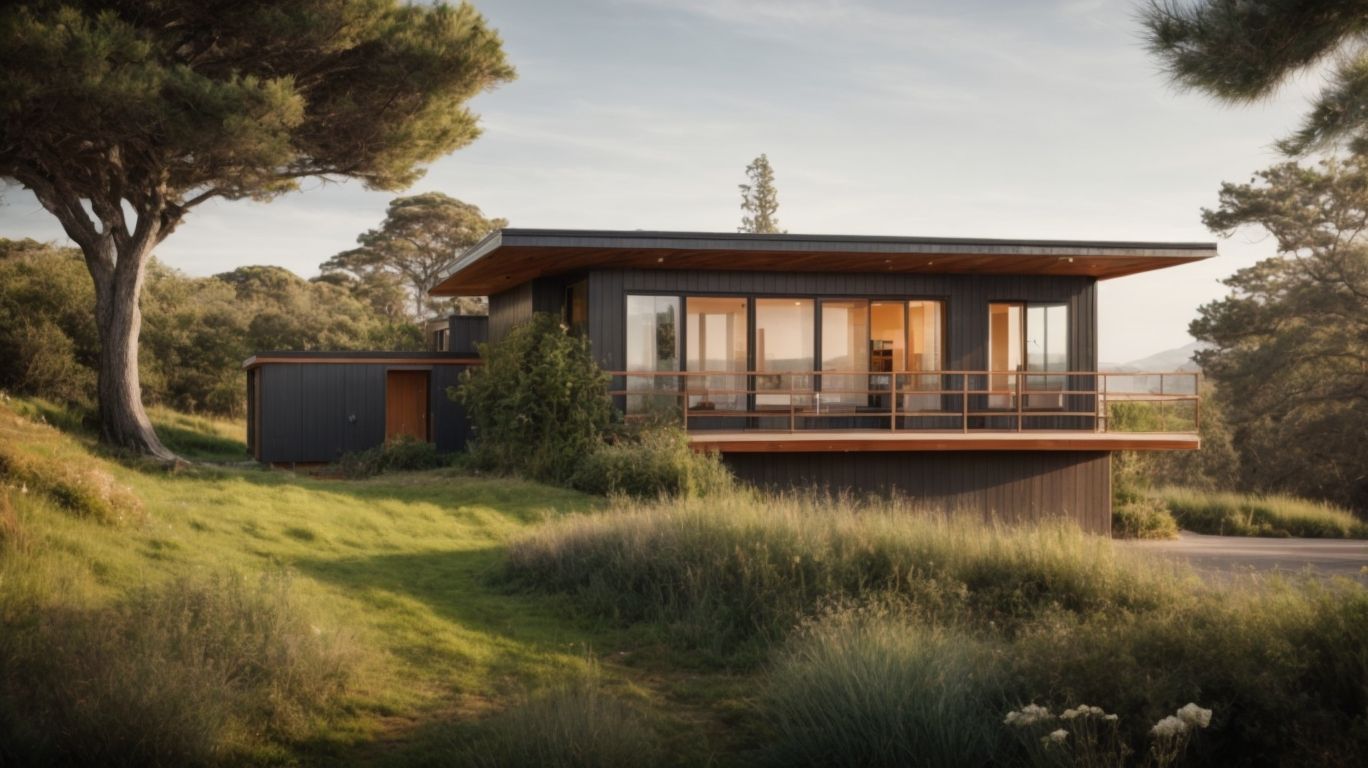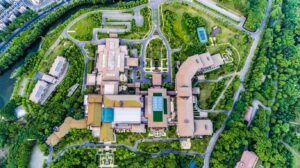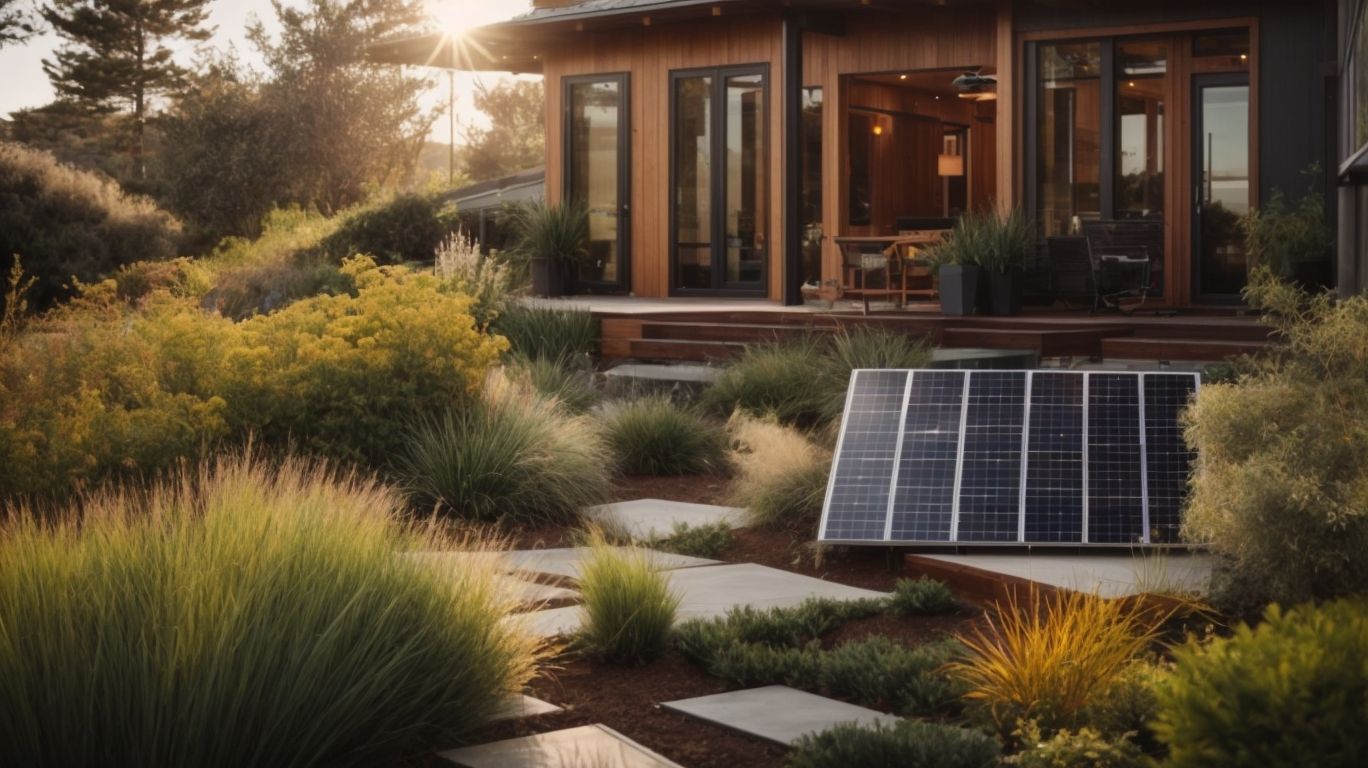
Prefab Perfection: Exploring Affordable Eco-Homes in the Bay Area
Are you intrigued by the concept of prefab homes and their rising popularity in the Bay Area?
Discover the different types of prefab homes and the eco-friendly features they offer.
In this article, we will delve into the benefits, challenges, and eco-friendly aspects of prefab homes, as well as explore how they can help reduce carbon footprint.
Learn about the most affordable prefab home options in the Bay Area and get tips on choosing the right one for your needs.
Join us as we explore the world of prefab perfection together!
What Are Prefab Homes?
Prefab homes, also known as prefabricated homes, are residential dwellings that are built off-site in a controlled factory setting and then transported to the final location for assembly.
This construction process allows for quicker build times and reduced construction costs compared to traditional site-built homes, making prefab homes an attractive option for those seeking affordability without compromising on quality.
In addition to their cost-effectiveness, prefab homes are often designed with eco-friendliness and sustainability in mind, incorporating green building practices and materials to minimize environmental impact.
Homeowners can also enjoy a range of customization options, from modular designs that can be easily expanded or modified to fit changing needs, to various eco-friendly features such as solar panels and energy-efficient appliances.
What Are The Different Types Of Prefab Homes?
Prefab homes come in various types, including modular homes, panelized homes, and kit homes, each offering unique design aspects and customization options.
- Modular homes are constructed in sections, or modules, in a factory setting and then transported to the building site for assembly. This construction method allows for quick and efficient building processes, reducing construction time and costs.
- Panelized homes, on the other hand, are built using pre-made wall panels that are transported to the site and assembled on-site. This method offers flexibility in design and faster installation.
- Kit homes provide customizable features, allowing homeowners to select specific components and finishes to suit their preferences and style.
Why Are Prefab Homes Becoming Popular In The Bay Area?
Prefab homes are gaining popularity in the Bay Area due to their sustainable construction practices, affordability, green building innovations, and suitability for urban living environments.
Their eco-friendly features, such as energy-efficient designs and the use of recycled materials, are appealing to environmentally-conscious buyers in the region. Prefab homes offer a quicker construction timeline, reducing the overall cost and inconvenience of traditional home building processes. With a focus on sleek, modern designs that maximize space efficiency, these homes cater to the needs of urban dwellers looking for contemporary living solutions. The flexibility in customization, incorporation of smart technologies, and seamless integration with sustainable infrastructure are further driving the demand for prefab homes in the Bay Area.
What Are The Benefits Of Prefab Homes?
Prefab homes offer numerous benefits, including meticulous design precision, energy efficiency, durability, streamlined homebuilding processes, and enhanced sustainability for modern living.
These homes are renowned for their impeccable design quality, showcasing innovative architecture and sleek aesthetics that cater to diverse tastes. The energy-efficient features integrated into prefab homes ensure lower utility costs and a smaller environmental footprint, aligning with sustainable living practices. Their durability surpasses traditional construction methods, offering long-lasting structures that require minimal maintenance. Prefab homes are built with efficiency in mind, reducing construction timelines and minimizing waste generation, making them a practical choice for those seeking a faster transition to comfortable, eco-friendly living spaces.
What Are The Challenges Of Prefab Homes?
While prefab homes offer numerous benefits, they also face challenges related to construction complexities, innovation requirements, cost-effective solutions, environmental considerations, and meeting the demands of modern architectural standards.
- One of the key challenges in prefab home construction lies in ensuring that the intricate designs and structural elements seamlessly come together during the assembly process. Continuous innovation in materials and construction techniques is essential to enhance the efficiency and durability of prefab homes, keeping pace with evolving industry standards.
- Achieving cost-effectiveness without compromising quality remains a priority for manufacturers, as ensuring affordability plays a significant role in making this housing option more accessible to a wider audience. Addressing environmental concerns by incorporating sustainable practices and materials is crucial for reducing the ecological footprint of prefab homes and aligning with sustainable development goals.
- Keeping up with contemporary architectural trends poses another test, requiring designers and builders to blend aesthetic appeal with functional efficiency in prefab home designs.
What Are The Different Eco-Friendly Features Of Prefab Homes?
Prefab homes incorporate various eco-friendly features such as solar panels, energy-efficient windows, green insulation materials, and rainwater harvesting systems to promote sustainable living and reduce environmental impact.
These green construction elements play a crucial role in minimizing the carbon footprint of the home. Solar panels are utilized to harness renewable energy from the sun, reducing dependency on traditional power sources. Energy-efficient windows are strategically installed to enhance thermal insulation and lessen heating and cooling energy consumption. Sustainable insulation materials, like recycled denim or cellulose, help maintain a comfortable indoor temperature while reducing energy needs. Rainwater harvesting mechanisms collect and store rainwater for household use, conserving valuable resources and reducing water consumption.
Solar Panels
Solar panels are a common eco-friendly feature in prefab homes, harnessing the power of sunlight to generate clean and sustainable energy for household use.
This integration of solar panels not only reduces dependence on traditional fossil fuels but also significantly lowers energy bills for homeowners. By utilizing renewable energy sources, prefab homes equipped with solar panels play a pivotal role in promoting sustainable living practices. They also contribute to the adoption of green technology, aligning with the global shift towards eco-friendly and environmentally conscious construction solutions. The energy efficiency of solar panels further enhances the overall appeal of prefab homes as modern, environmentally friendly dwellings.
Energy-Efficient Windows
Energy-efficient windows play a crucial role in prefab homes by enhancing insulation, reducing heat loss, and promoting eco-friendly design practices that contribute to energy-efficient and sustainable living environments.
These specialized windows are designed to effectively seal and insulate homes against outside temperatures, ensuring that the interior remains comfortable year-round. By minimizing heat loss during colder months and preventing heat gain in warmer seasons, energy-efficient windows help maintain a consistent temperature inside prefab homes, reducing reliance on heating and cooling systems. This not only enhances overall energy efficiency but also lowers utility bills and decreases carbon footprints, aligning with green home design principles and sustainable living practices.
Green Insulation Materials
Prefab homes utilize green insulation materials that are eco-friendly, sustainable, and contribute to energy conservation efforts, creating low-energy and environmentally conscious living spaces.
These innovative materials, made from recycled or renewable sources such as cellulose, wool, and cork, play a vital role in supporting sustainable housing design practices. By minimizing the carbon footprint during production and installation, green insulation reduces the overall environmental impact of prefab homes. Their high thermal resistance properties help in maintaining optimal indoor temperatures, thus reducing the need for excessive heating or cooling systems. This not only enhances energy efficiency but also contributes to a healthier and more comfortable living environment for the occupants.
Rainwater Harvesting Systems
Rainwater harvesting systems in prefab homes offer sustainable solutions for water management, resource efficiency, climate resilience, and eco-friendly construction practices that align with principles of environmental conservation and sustainable living.
These systems play a crucial role in promoting self-sufficiency in water supply, reducing reliance on centralized water resources, and minimizing the strain on municipal water treatment facilities.
By collecting rainwater for various non-potable uses like irrigation, flushing toilets, and laundry, prefab homes equipped with rainwater harvesting systems contribute significantly to conserving fresh water resources and reducing overall water consumption.
This integration of sustainable water management practices enhances the eco-friendliness of prefab homes, making them more resilient to the impacts of climate change and supporting greener, more sustainable living environments.
How Do Prefab Homes Help In Reducing The Carbon Footprint?
Prefab homes contribute to reducing the carbon footprint through energy-efficient designs, passive cooling and heating systems, net-zero energy consumption models, and the promotion of sustainable, energy-efficient homes that align with environmental conservation goals.
These homes are designed with eco-friendly materials that minimize waste and optimize energy usage. With features like high-performance insulation, advanced ventilation systems, and solar panels, prefab homes aim to achieve energy independence and reduce reliance on traditional energy sources. By integrating smart technology for energy monitoring and management, these homes prioritize efficiency while maintaining comfort. The passive design strategies employed in prefab homes help reduce the need for artificial heating and cooling, further decreasing energy consumption and greenhouse gas emissions.
What Are The Most Affordable Prefab Home Options In The Bay Area?
In the Bay Area, some of the most affordable prefab home options include modular homes, panelized homes, and kit homes that cater to individuals seeking low-cost, affordable living solutions without compromising quality or sustainability.
These types of prefab homes offer a practical alternative for those looking to own a home without breaking the bank in a high-priced real estate market like the Bay Area. Modular homes provide flexibility in design and construction, making them a customizable and budget-friendly choice. Panelized homes offer a quicker construction process, saving on labor costs and reducing overall expenses. Kit homes, with their DIY assembly options, further enhance the cost-effectiveness, allowing homeowners to participate in the building process and save on construction expenses.
Modular Homes
Modular homes are a popular prefab option in the Bay Area, known for their customizable designs, sustainable homebuilding practices, and support for green initiatives that promote eco-conscious living in urban environments.
These homes offer a high level of design flexibility, allowing homeowners to personalize their living spaces to suit their unique preferences and lifestyle needs. With modular construction, residents have the opportunity to choose from a variety of layout options, materials, and finishes, ensuring that their home reflects their individual taste. The use of sustainable construction methods, such as energy-efficient appliances, solar panels, and eco-friendly building materials, contributes to reducing the environmental impact of these dwellings while aligning with the region’s green living initiatives.
Panelized Homes
Panelized homes offer a streamlined construction process in the Bay Area, incorporating innovative building techniques, sustainable architectural elements, and green development principles that contribute to eco-friendly, efficient home construction practices.
These prefabricated homes consist of factory-built panels that are transported to the construction site for rapid assembly, significantly reducing on-site construction time and minimizing material waste. The precision of panelized construction leads to higher energy efficiency and lower operational costs for homeowners. The use of sustainable materials and advanced insulation systems ensures that these homes are environmentally friendly, supporting the region’s commitment to sustainable development and green building initiatives.
Kit Homes
Kit homes provide a cost-effective solution for urban living in the Bay Area, utilizing sustainable materials and construction methods to create environmentally friendly housing options that cater to the needs of modern city dwellers.
These homes not only offer affordability, but they also contribute to the conservation of natural resources and the reduction of carbon footprint. By incorporating eco-friendly construction techniques such as passive solar design, rainwater harvesting systems, and energy-efficient appliances, kit homes in the Bay Area promote sustainable living practices. Their modular nature allows for easy customization and expansion, making them a versatile and practical choice for urban environments seeking innovative housing solutions.
How To Choose The Right Prefab Home For Your Needs?
Selecting the ideal prefab home involves considering factors such as budget constraints, location suitability, design preferences, eco-friendly features, and the need for high-performance, energy-efficient living spaces tailored to urban living requirements.
When it comes to customizing a prefab home, exploring your design choices is crucial. You can opt for modern, minimalist designs or go for a more traditional aesthetic; the key is to align the design with your personal style and needs.
Prioritizing energy efficiency is essential in today’s sustainability-conscious world. Look for features like solar panels, energy-efficient appliances, and proper insulation. These elements not only reduce your environmental impact but also lead to cost savings in the long run.
Innovative home designs can offer solutions that cater to the demands of modern urban living, such as compact layouts, multifunctional spaces, and smart home technologies.
Budget
Determining a suitable budget for a prefab home is essential to ensure a balance between affordable living solutions and green construction practices that align with sustainable urban development principles.
Striking this balance not only impacts your immediate financial investment but also influences the long-term sustainability of your home and its ecological footprint. By carefully planning your budget, you can prioritize eco-friendly materials, energy-efficient systems, and sustainable construction techniques that contribute to a healthier environment and lower maintenance costs over time. Choosing cost-effective strategies that promote sustainable urbanism can lead to a home that not only fits your budget but also serves as a model for responsible development in your community.
Location
Choosing the right location for a prefab home involves evaluating urban planning aspects, sustainable city development initiatives, and green living opportunities that enhance the overall living experience and environmental impact of the residence.
- When considering the location for a prefab home, one must take into account not just the immediate surroundings but also the broader urban context. Urban planning considerations play a crucial role in ensuring that the home integrates seamlessly with the existing infrastructure and amenities of the city.
- Sustainable city development trends further emphasize the importance of reducing environmental footprint and promoting resource efficiency. By strategically placing prefab homes in areas that align with green initiatives, it contributes to creating environmentally conscious and livable urban spaces that prioritize eco-friendly practices for a more sustainable future.
Design And Layout
Customizing the design and layout of a prefab home involves incorporating modern architectural elements, green development strategies, and a vision for a sustainable future that aligns with eco-conscious living choices and contemporary design aesthetics.
When designing prefab homes, it is essential to consider innovative approaches that prioritize energy efficiency, natural light integration, and sustainable materials. The layout should seamlessly blend indoor and outdoor spaces, promoting a harmonious connection with nature. Incorporating smart technologies and renewable energy sources can further enhance the eco-friendly features of these homes. By embracing modular construction techniques and utilizing recyclable materials, prefab homes can significantly reduce their environmental impact while offering residents a stylish, functional, and environmentally responsible living space.
Eco-Friendly Features
Incorporating eco-friendly features into a prefab home involves prioritizing energy conservation, green design principles, and the creation of sustainable communities that foster environmental stewardship and support low-impact living choices.
By integrating energy-efficient systems like solar panels and smart thermostats, prefab homes can significantly reduce their carbon footprint and lower energy costs for residents. Green design ideologies focus on using sustainable materials and maximizing natural light to enhance energy efficiency. Sustainable communities built around these principles not only benefit the environment but also promote a healthier lifestyle for residents. This approach to construction aligns with the growing movement towards eco-conscious living and showcases a commitment to sustainable practices in modern housing development.




No Comments